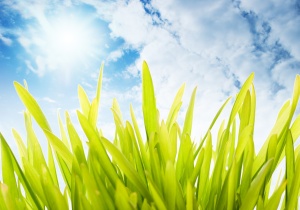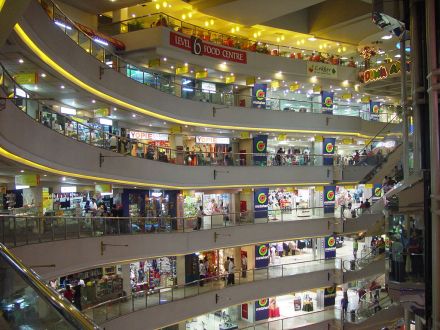Ted Talk: How Food Shapes our Cities
Carolyn Steel did a great job of discussing the interconnectedness of urban and agricultural areas in a short Ted talk. One of her main points was the fact that despite the obviously huge importance of food and food production to maintain the growing urban populations, there is a sort of mystery about where a lot of that food comes from and how it gets to the supermarket shelf. In very ‘developed’ countries – like the United States – it is easy to see why many people do not question this system very often, because it has been like this in many urban areas in the U.S. for over 100 years, some areas even longer some areas less.
Pitfalls to this system seem to multiply when more and more people participate in it. Some have touted the solution to the first problem (The problem of where our food comes from – which is in many cases places that have a large negative environmental impact) to be TRANSPARENCY in our food production and distribution systems. I definitely agree that raising an awareness about where the food comes from is extremely important, but it should go beyond that.
The general population may have to become more aware of what they value in the environment (clean air, clean water, wild animal and plant species, the multitude of services that natural environments provide)- so they can discourage governments, businesses, and farmers from enacting policy’s which may destroy it (think pesticides – DDT – Bald eagles; think water quality issues, many fish do not fare well in turbid waters which have been severely degraded due to agricultural run-off, Swamps which have previously been drained across the country actually provide the valuable service of absorbing massive amounts of run-off water – and also are natural water filters) if people do not support businesses which produce and distribute products which damage the environment carelessly, then those businesses will change. While many consumers are beginning to understand how their purchases affect what companies sell and what goes into the process behind making those products, there is still a long way to go.
You don’t have to go far to see how the water quality in the United States is still at a fairly low point (especially for our major rivers), despite definite positive progress in many localized areas. You can look out your window at the deplorable state of some of the great rivers of this country for evidence – I read warnings all the time about how we should not even consume reasonable amounts of many fish from the Ohio, Missouri, Mississippi rivers (among countless others in state after state) due to such high concentrations of dangerous contaminants in their bodies. Finding heavy metals, dangerous chemicals, and pesticides in our major rivers is barely even a newsworthy topic anymore it has become so common. Freshwater is certainly one of the most precious resources on this earth, many would die for it, and many do. What does it say about us if we are content to sit back and allow this to go on? One of the main causes of pollution to these rivers is non-point agricultural pollution (which was created to feed us), another major source of contamination is the heavy metals (from a variety of sources including mercury from coal power plants which supply energy to our homes and businesses, and a host of other metals from industrial activities which supply us with the materials we use and consume). In short, no matter what people, companies, or governments say about how they value the environment (or clean air, clean water, etc.) the proof is in their actions, and the outcomes from their actions. An energy company that tells us about their sustainability initiatives on the one hand, yet continues mountaintop removal coal mining is speaking much louder with their actions than with their words.
People must also see the inherent importance of biodiversity – not just in nature, but also in agriculture. It is easy to see the food growing on a vine, but we do not often see the work of thousands of pollinating insects, complicated systems of microbes nourishing the plant, or understand the importance of other plant and animal species which through a complicated web support the life of that vine. It is overly simplistic to believe if we just keep adding a certain chemical mixture to soils, and keep bugs from eating them, then they will be strong plants and we will have plenty of food. The dangers of this system are being realized. Where is the rich topsoil on hillsides across this country and countless others? Washed into streams and valleys we lose fertile soil and farmers feel they must use more and more fertilizer to support large yields. It turns out we cannot expect the soil to replenish itself if we continually take, but give back so little. What is happening to so many of our pollinating insects? Some people may cite the huge decline in honeybees as an example of how we have somehow managed to seriously hurt ourselves by endorsing the widespread use of our simplistic agricultural system. Whether honeybees are a victim of us, I don’t know, but I do know that there is no possible way you can spread pesticides over millions of acres of land in any country – in order to kill insects – and not succeed in doing much more damage than you believed you were doing.
Consumers will also have to understand how their small preferences in type, appearance, and quality of food, have massive impacts on the system which they ultimately support. By insisting every piece of produce look large and/or perfect, consumers are almost demanding pesticides and fertilizers (often synthetic) be used. Consider that when gathering fruit in places where no/less fertilizer and no/less pesticides were used some fruits may be smaller, some leaves may have a small hole or two in them, there may not be as much uniformity overall. Why is this a bad thing? I am not sure. A friend told me a story about a farmer’s market they had been at where a woman was speaking to one of the vendors there selling some greens. She commented that while the greens looked excellent overall, some of the leaves had a couple of small holes on them from an insect. This was one reason why she would buy them. She could see that the insects found the plants delicious and the plants were so strong that they grew very well in spite of sharing some of their leaves with the insects. Also this is a good clue that the farmer was not applying sprays or powders to the leaves to kill insects that may land on them
How our food gets to the shelf
The transportation network in this country to deliver food from a farm to a table is astonishing. This video really highlights how countries develop around the food distribution network, and the United States is no exception. Cars have given us the ability to live very far from our sources of food because so many things can be trucked in and dropped off at grocery stores and restaurants, but we still need reminding that the system as we have built it today will eventually have to change significantly. I am not going to throw my 2 cents very far into the endless well of debate on the problems associated with oil/gas consumption and drilling. You can learn about that on your own time. All I will say is so much of our infrastructure in the United States especially, is geared towards cheap/unlimited oil/gas/diesel. We are transporting many of our fruits from around the world by air and sea, to ports across the country where they are delivered to stores and restaurants via a complex network of diesel trucks (some even refrigerated), and then we drive to the stores and restaurants to get this food (Look up Carbon Miles for Food). Even when it comes to domestic food production things don’t always seem to make sense. We are growing and subsidizing cheap corn across the midwest (all the while using huge amounts of diesel to produce it), then we take that corn and try to turn it into a variety of simple carbohydrates (corn syrups, high frustose corn syrups, etc.), animal feed, and of course ethanol (which also takes a lot of fuel to produce and distribute), and finally we take the rest and try to export it to other countries so we can turn right around and import fruits, vegetables, and countless other things that we could have just grown here to begin with. Who in the long-term is coming out ahead in this? It isn’t the farmers in most cases See this article on decline of farms in the US Many of them are just scratching by. I am sure there is a money trail here to people who are benefiting from this situation, but I will leave that to you, the reader to look around you and find.
I know some people will point out that technologies change and all industries must become streamlined and more efficient over time if they are going to survive. But this ignores the fact that some industries are very unique. Food production is certainly one of them. Water, food, shelter are all needs. Food is a huge category and it has historically been grown, raised, or produced almost everywhere by almost all people. So the fact that the production of it is being concentrated in fewer and fewer hands does not seem inevitable to me. In fact with the increase is communication, transportation, and educational opportunities for people it seems like the opposite could just as well happen. It is not difficult and there are few barriers to entry into the market. Access to information about growing your own food has never been easier to come by (internet, books, libraries, advice from others already doing it). If you have some dirt, sunlight, seeds, and water you have the potential to grow something to eat.
In the end maybe one solution to the problem of knowing where food is produced, and knowing the resources consumed in transporting it to us, lies within us. We can decide to produce it ourselves and watch the process happen in our backyards. We can purchase food from our neighbors and ask them how they grew it in their backyard. If you live in a city where backyards are scarce you still have windows that let in the light. There are markets where farmers still sell their produce they grew nearby. You can lobby in your area to have community gardens. You can ask your grocery store why huge chunks of its produce section were brought in from 3,000 miles away when you know it is harvest time for some of those vegetables right where you happen to live. Whatever you decide you value, and how you choose to act upon that, is as always up to you. However, remember that by ignoring evidence, or by not taking responsibility for our choices, we are living out one set of values. I do not now if that is the set we all wish we were living up to, but it is if it is the one we choose.





